Tullie House Museum & Art Gallery, Carlisle
A review of a visit to the Tullie House Museum & Art Gallery in Carlisle. An expansive collection covers art, history, geology, natural history, decorative arts and more, with a fine historic building at the museum’s heart.
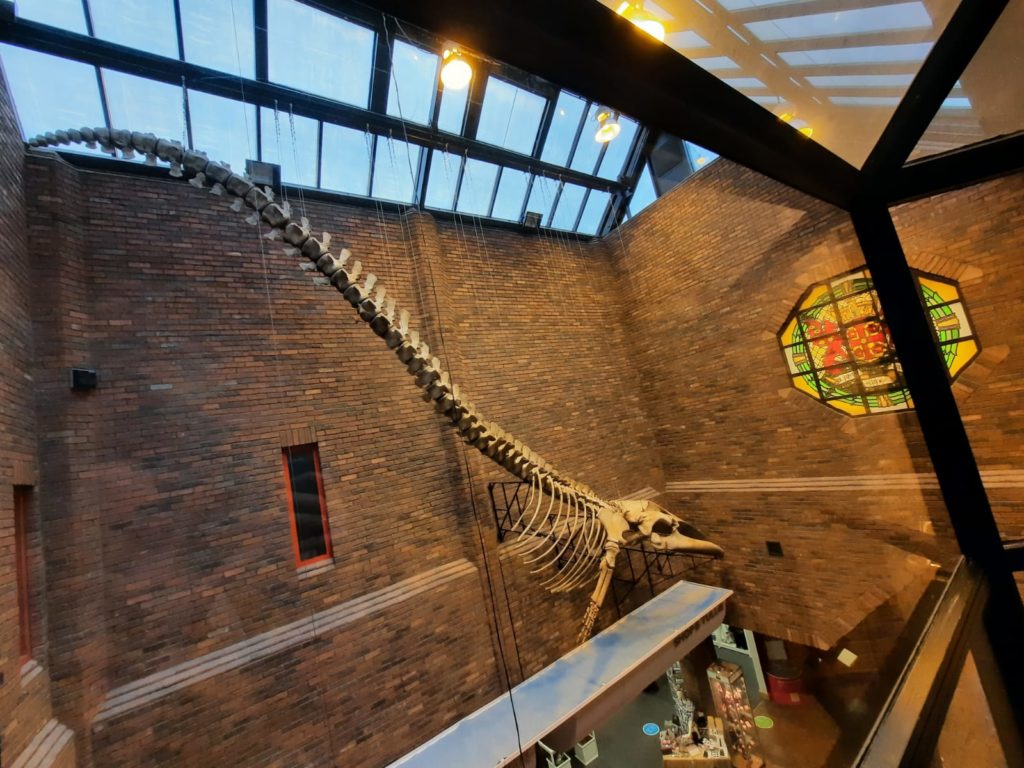
A History Of Tullie House Museum
I recently had the opportunity to visit Tullie House Museum & Art Galley when I was in Carlisle walking Hadrian’s Wall. Most of the experiences I had along the way are in my write up of the wall itself. Tullie House, on the other hand, is so much more expansive that I felt it deserved its own post.
The museum’s identity and history feel to me a little hard to figure out, but I will do my best for you here. First of all, Tullie House is a historic, Grade I-listed town house. It’s at least as old as the 16th Century (originally called the White House), and the Tullie family lived here before the 19th Century. Part of the museum is this historic home – timber-panelled rooms, fireplaces, and Victorian staircases and tiling presumably from when the museum first opened in 1893. I was expecting this to be the work of a local philanthropist donating his collection, perhaps the eponymous Tullie, but I don’t think that’s correct. The Carlisle Corporation established the museum, and I have found little information online about the foundation collection. Today the Tullie House section of the museum displays Pre-Raphaelite and modern paintings as well as decorative arts such as porcelain and furniture.
Tullie House is so much more than just a nice townhouse with some Pre-Raphaelites, however. A couple of big renovations have significantly expanded the exhibition space, and today it is a catch-all civic museum. There are displays on Roman and Viking history, pre-history, geology, and fashion. There’s information on this area as a volatile border region. A specific focus on Hadrian’s Wall. Viewpoints over a whale skeleton or Carlisle Castle. Literally something for everyone. So with such a wide net cast, let’s see how Tullie House stacks up.
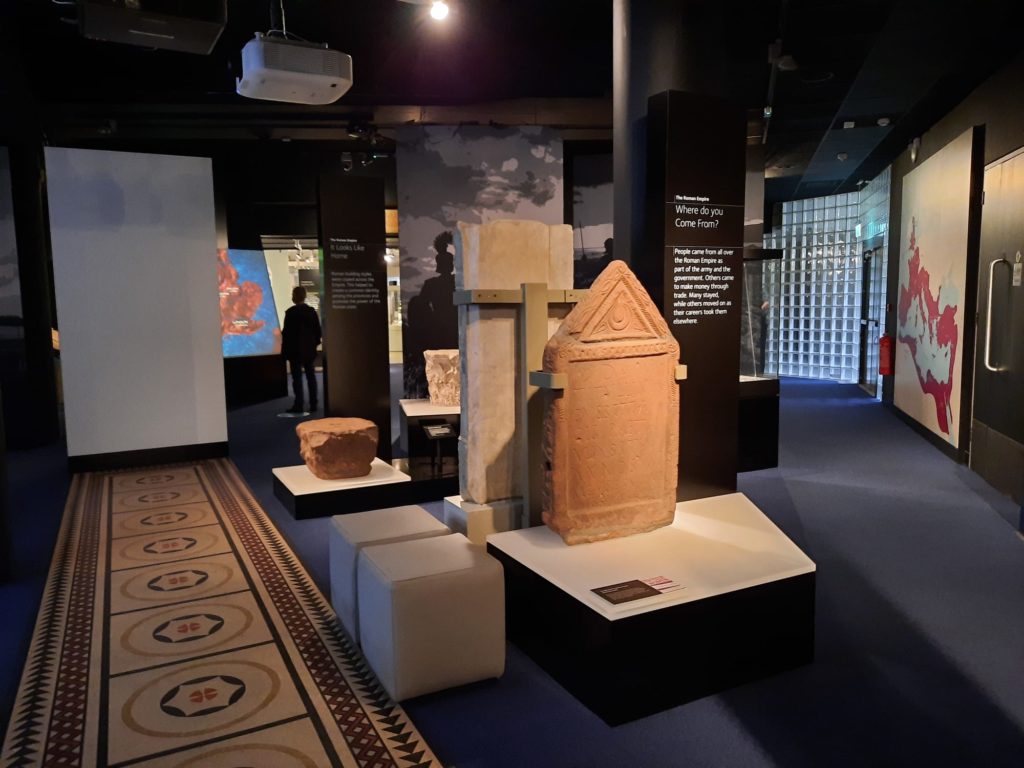
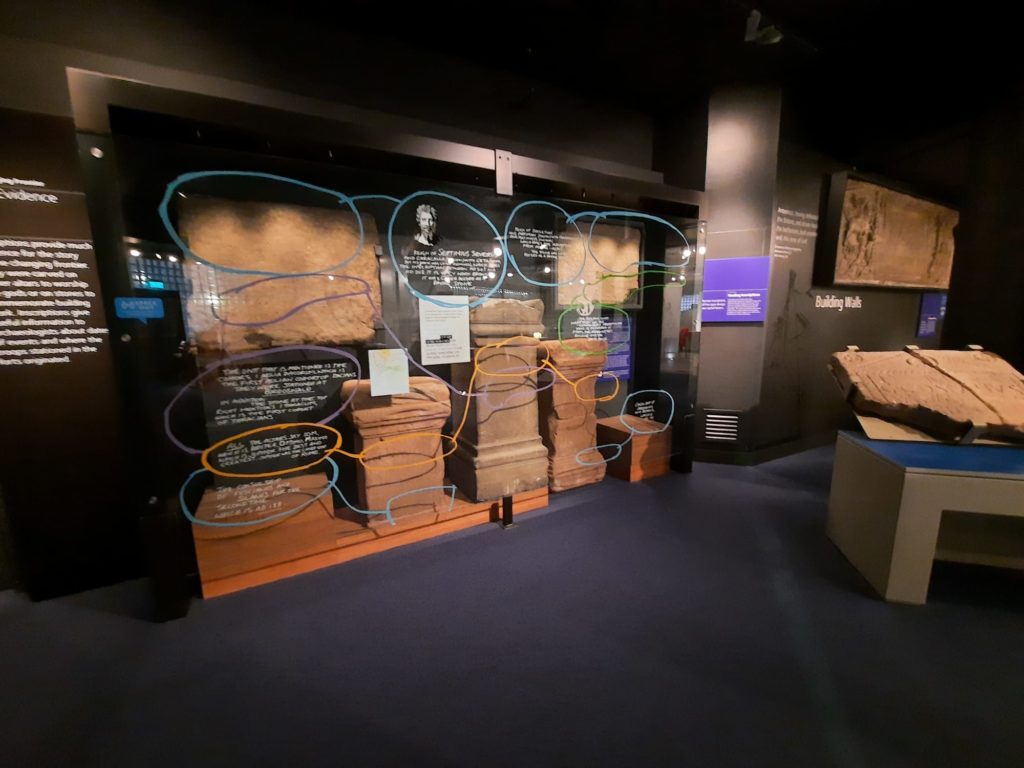

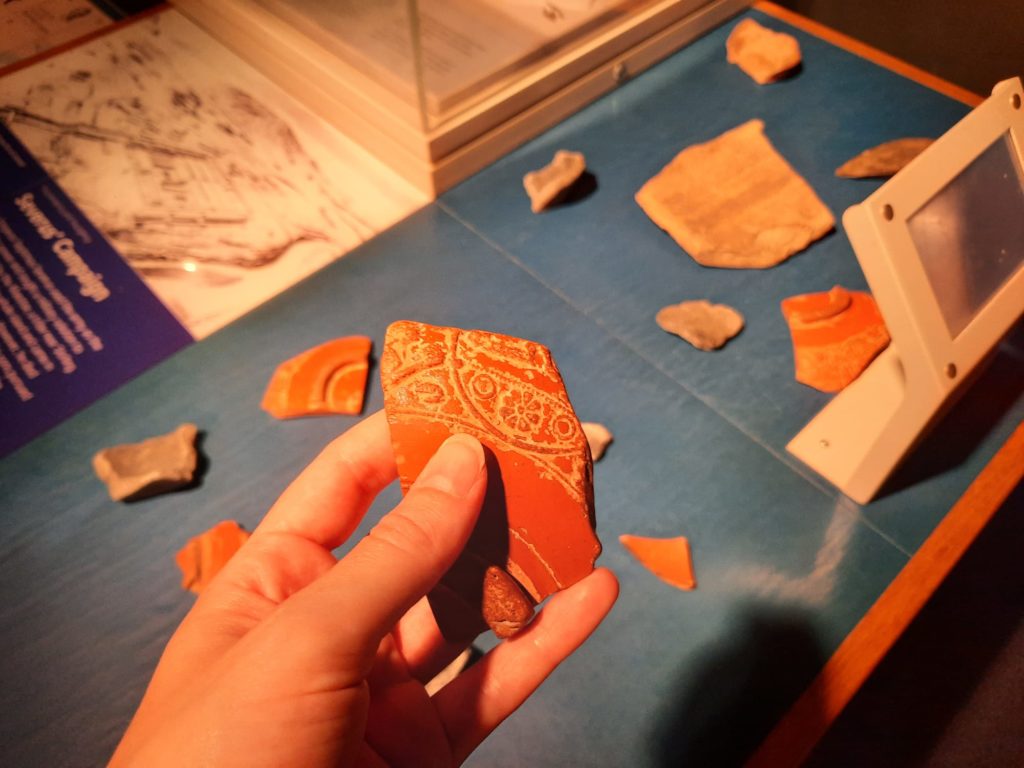

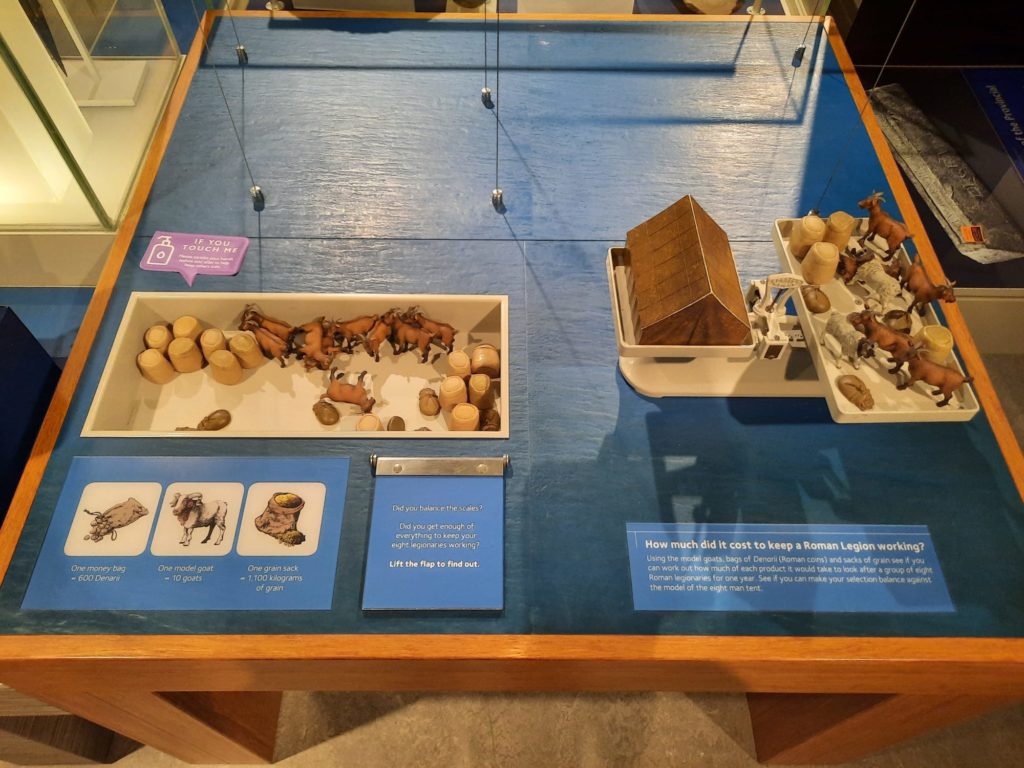
All About The Romans
I started my visit to Tullie House Museum with ‘The Roman Frontier’. This expansive basement gallery is a partnership with the British Museum. This gives an opportunity to display some items that would presumably otherwise be in storage, but here get the chance to illuminate life in the area of Carlisle two millennia ago. Carlisle in its Roman days was Luguvalium. It was from here that the Romans administered the defences along Hadrian’s Wall, making it an important spot. There was a cavalry fort at Uxelodunum, now the Carlisle suburb of Stanwix. And important finds are still being uncovered today, for example at Carlisle Cricket Club.
The gallery is very interactive, which my inner child always enjoys. I wandered around trying out puzzles, physical activities, and even handling sherds of Samian ware. Maybe not always the most Covid-secure, but there was plenty of sanitiser about. The level of information was very well-pitched to be accessible and engaging. The information panels answer questions like who lived here, how people made a living, what their homes and daily lives were like, and illustrate the information with a broad range of objects.
As an introduction to Tullie House I was seriously impressed. The Roman Frontier gallery set the scene for Carlisle’s beginnings, connected it to the modern world, and made it fun. Now to head back out of the basement and see what else is on offer!
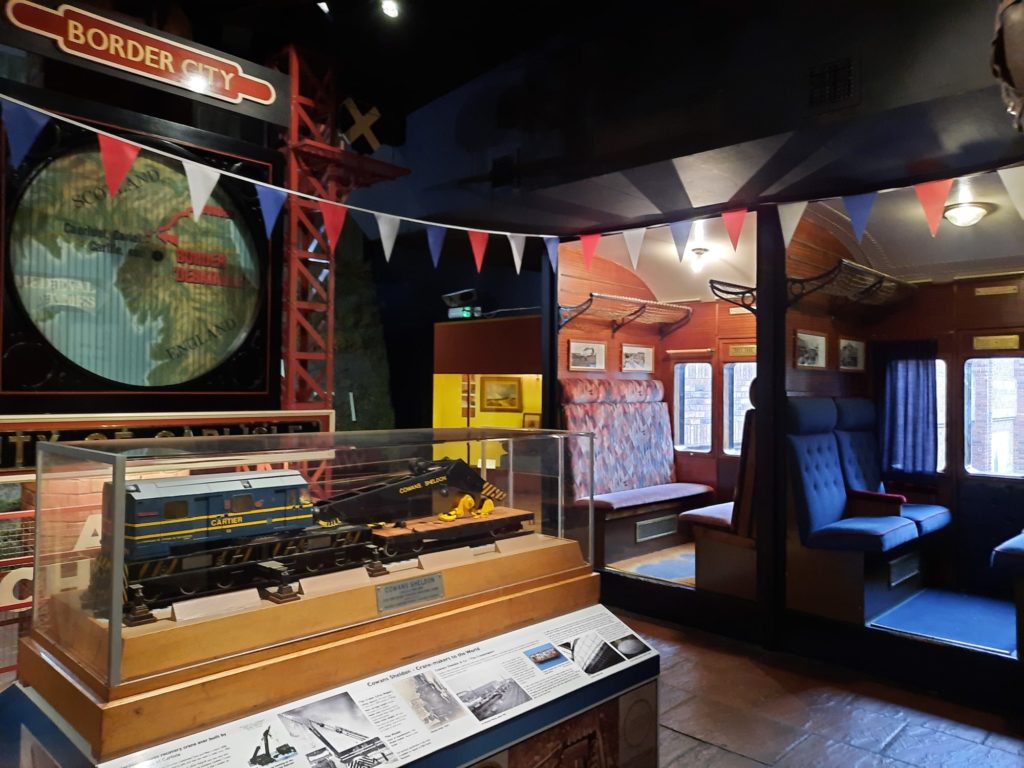

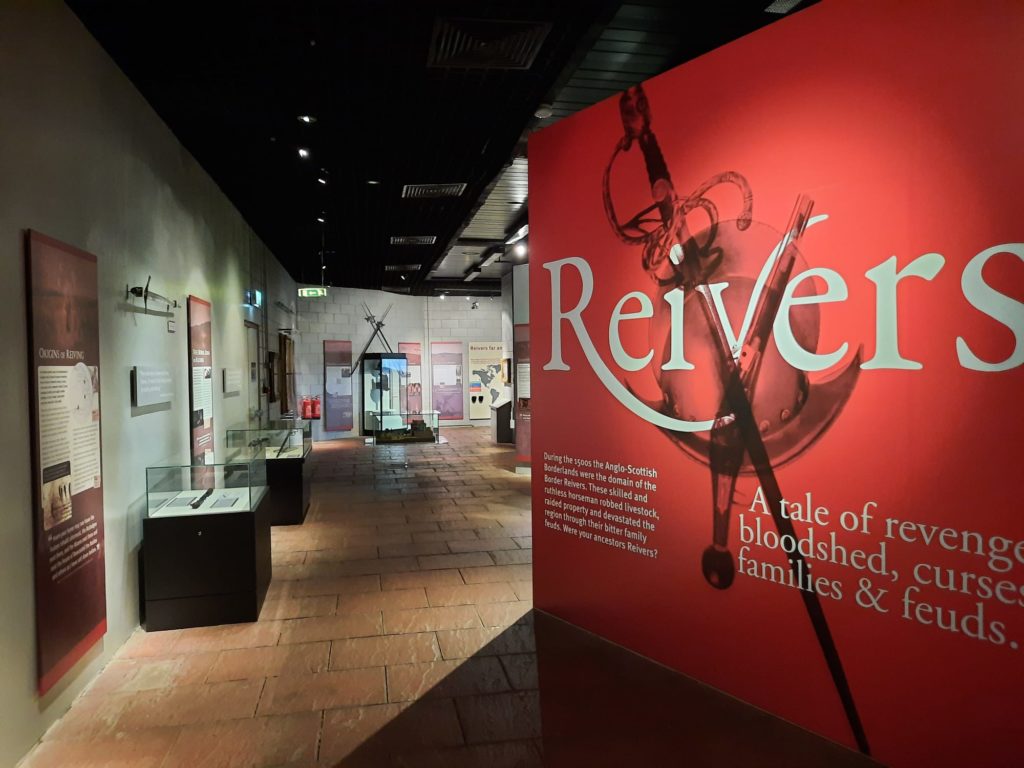
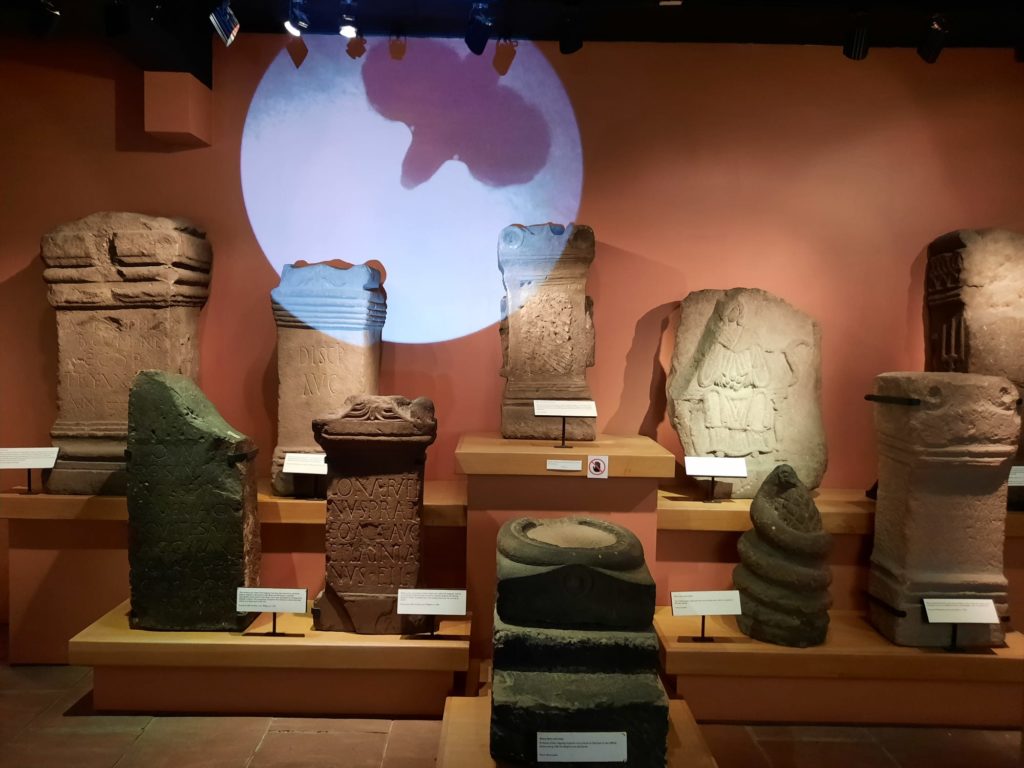
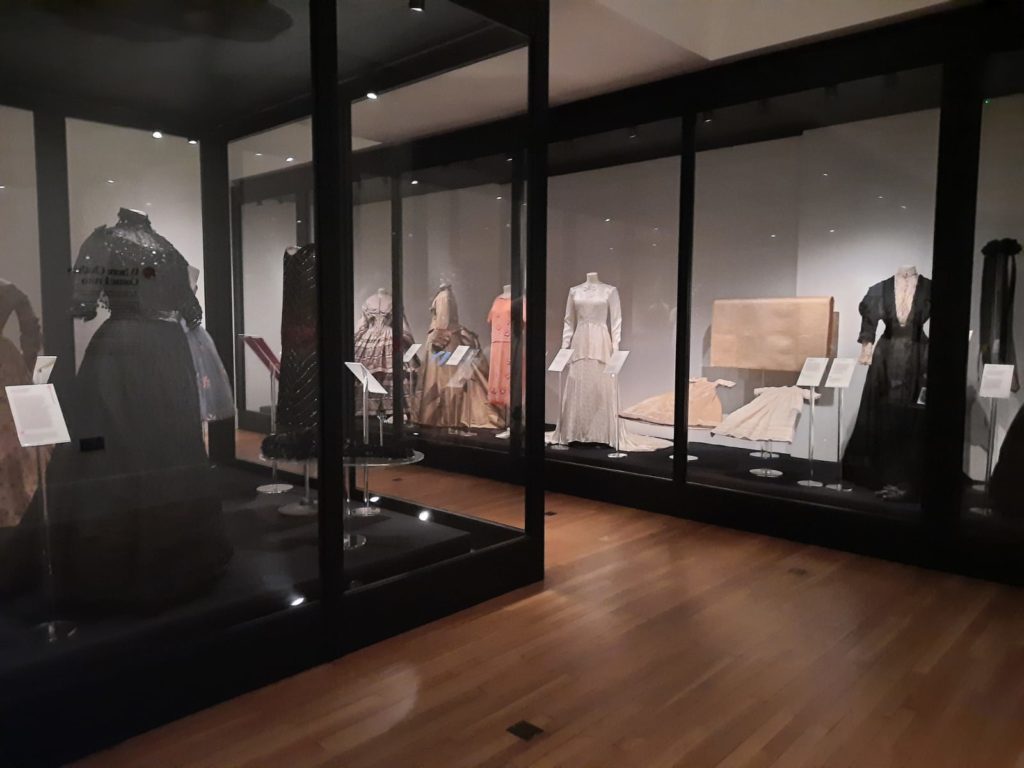
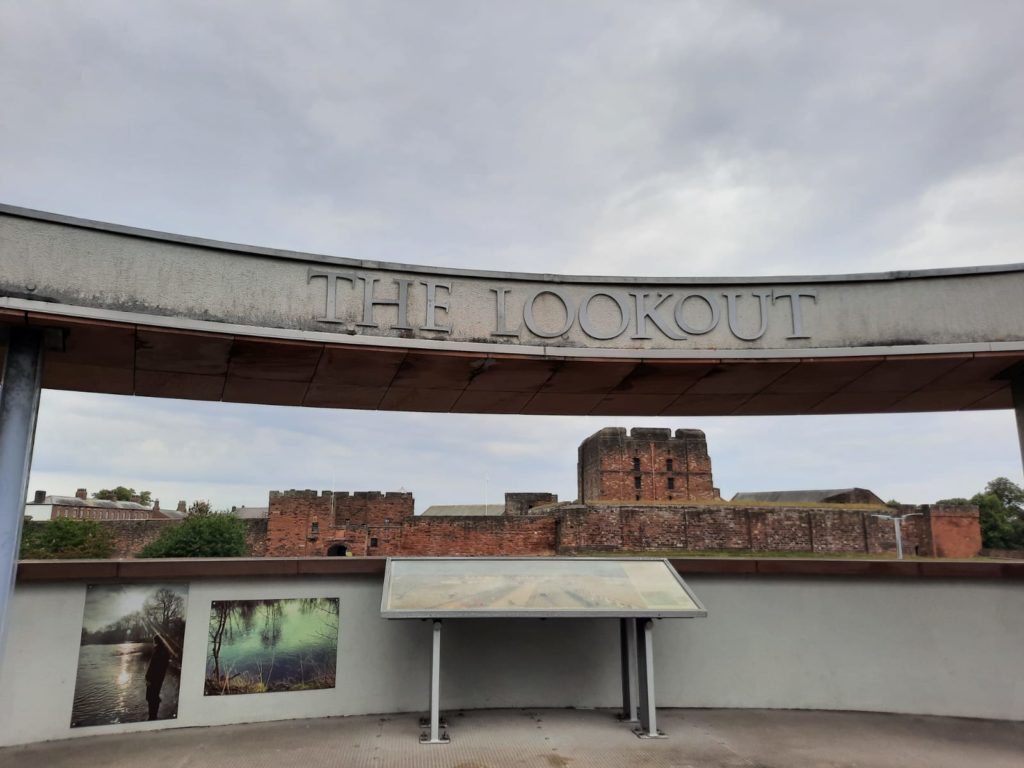
[More] Romans, And Reivers, And Robes, Oh My!
Ok time for a confession. The thing about walking Hadrian’s Wall is that no matter how much walking you have to do that day, you seem to arrive at your destination between 3-4pm. We did ok on this day, arriving in Carlisle just after 2. However, the Tullie House Museum closes at 4. So by the time I got down there, it was a rush to get around the whole thing. That may have contributed to my feeling of overwhelmedness on this middle floor. Or it might have happened anyway, as there’s an awful lot going on.
The first floor of the museum is where Tullie House goes from being a relatively focused historic home museum or Roman gallery to being an expansive, catch-all city museum. There is SO MUCH here to see. The geology of the region; a bit on Vikings; pre-history and archeology; some more Romans in the form of a reconstruction of Hadrian’s Wall and some local Roman and contemporary British finds; something shoe-horned in about railways I think because there were some nice reconstructed train carriages overlooking the castle. I was flitting about like a little confused butterfly, trying to get a sense of the place. And on top of that they had some contemporary art commissions integrated into the permanent displays, like Shadow Clock by Jennifer McMillan which you can see in the fourth image above.
What To Choose?
Each section is well-presented and interesting, so my advice is to do one of two things. Either pick and choose according to your interests. Or have a lot more time to explore than I did. Or both, I guess. If I had done the former, I would have spent more time on the Reivers, and in the Costume Collection. Reivers were raiders along the Anglo-Scottish border from the 13th-17th Centuries. This was serious business – most older houses along the Wall seem to have been fortified to protect against them. At Tullie House, this section gives a good sense of the impact this continual terror had on the lives and livelihoods of those living in the border regions.
And I surprised myself by picking the Costume Collection as one of my highlights. This is a new display, and also forms the bridge between the museum extension and the original Tullie House. Outfits which survive the ages do of course tend to be the best of the best, but I thought there was a good selection here, with a clear attempt to include some ‘ordinary’ clothes as well. The outfits were well-displayed, and connected to what they can tell us about social history. Very interesting.
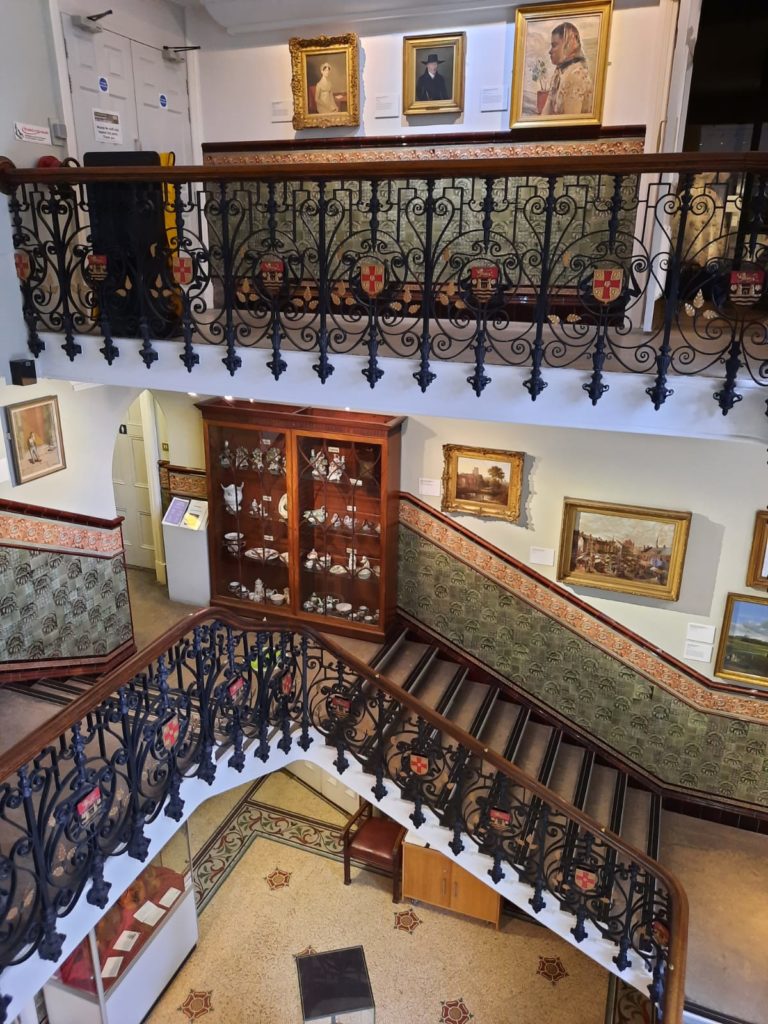
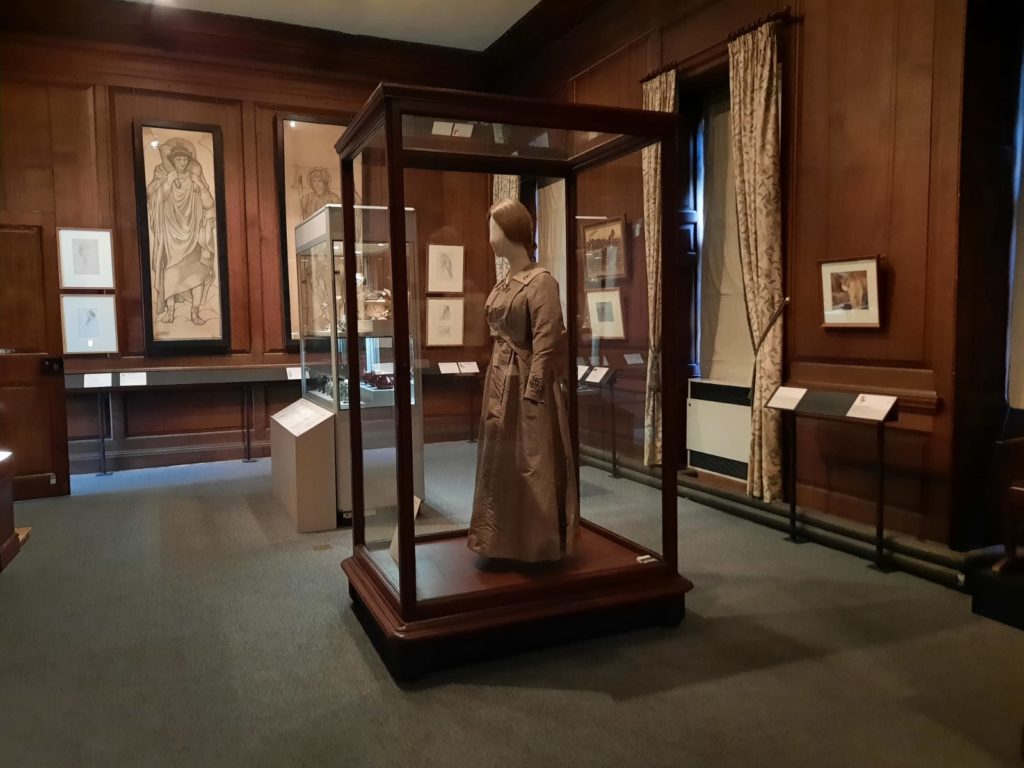
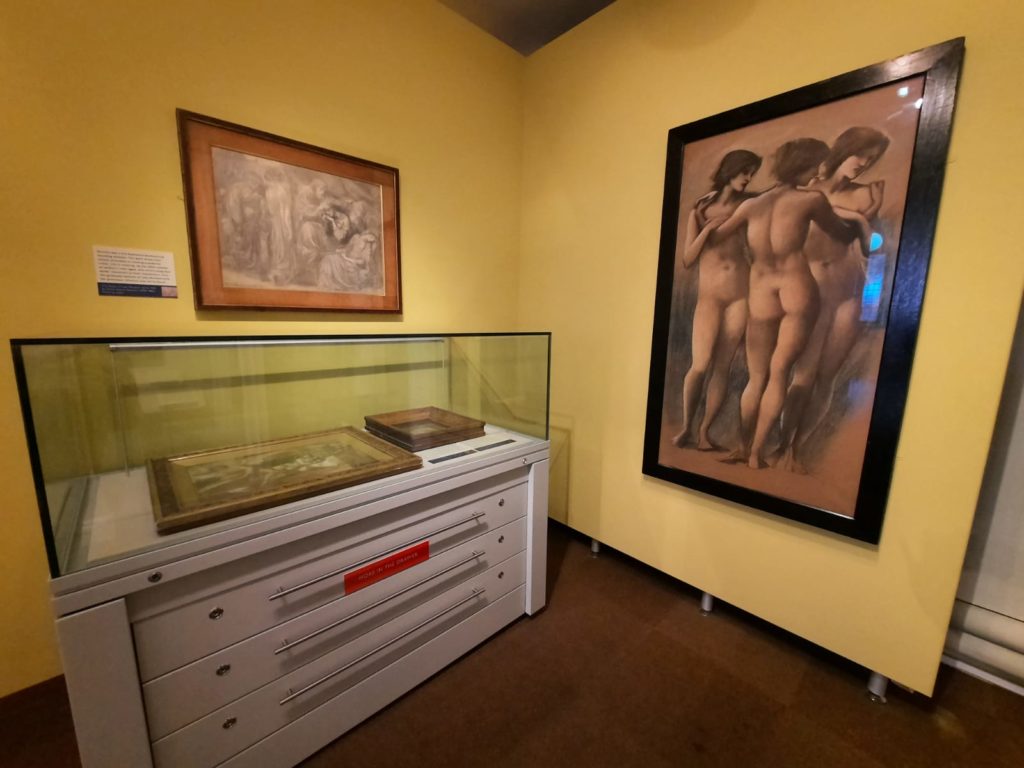
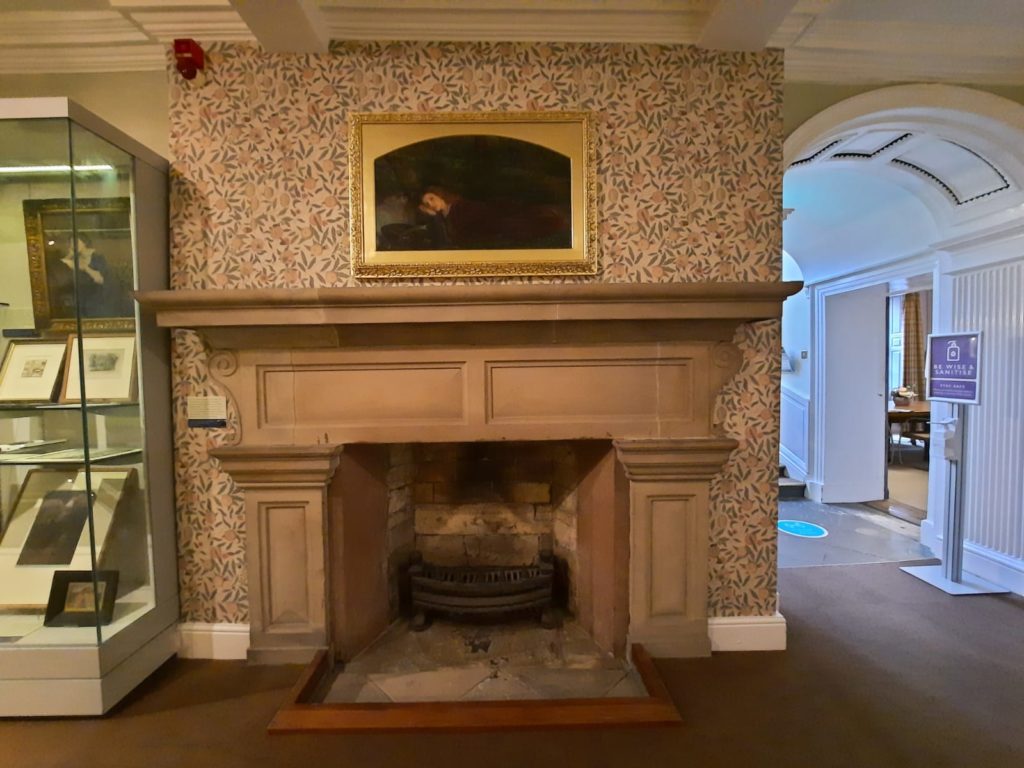
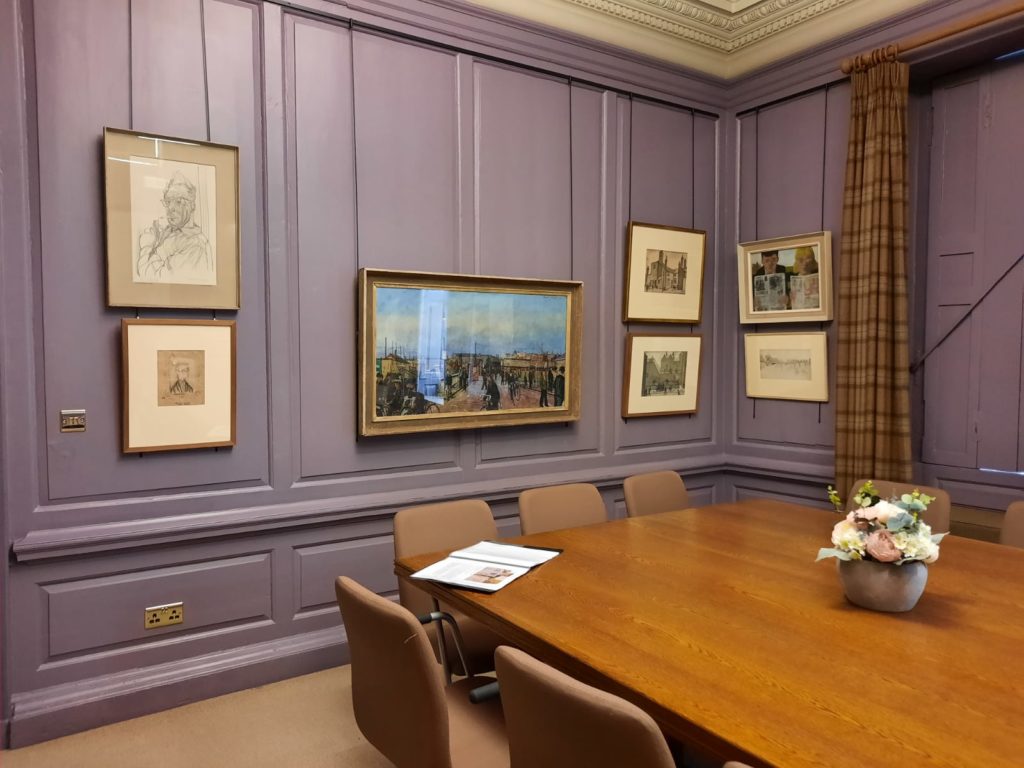
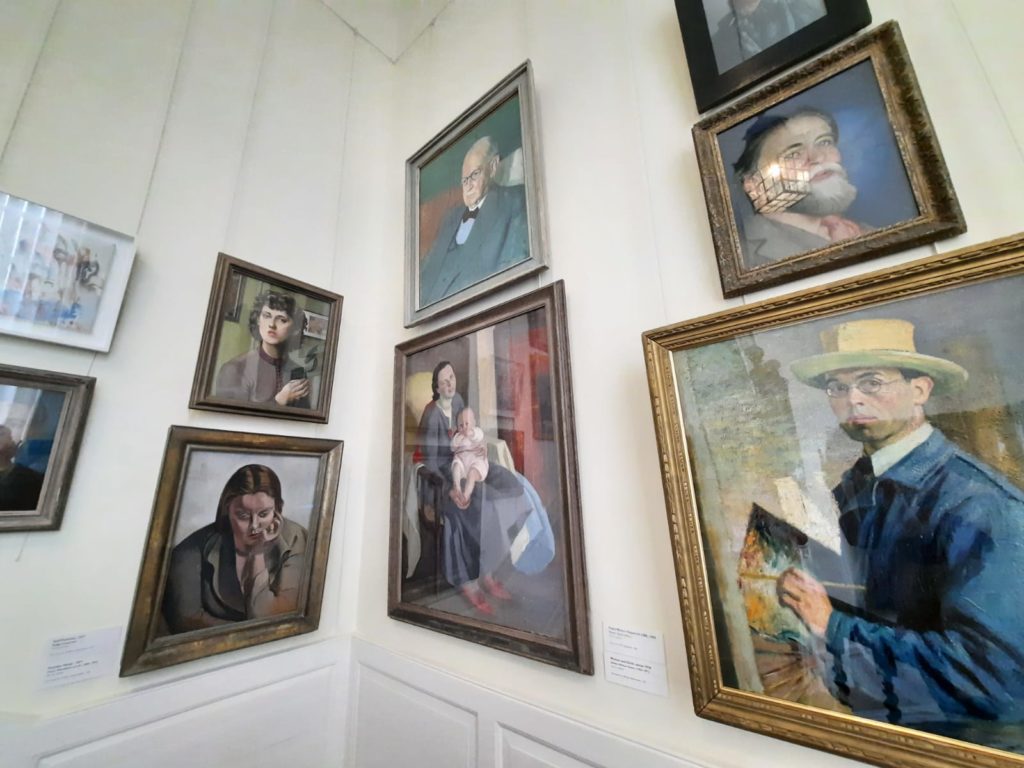
Tullie House
We have made it, dear readers! We have traversed the corridors of history as well as the corridors of the museum, and arrived at the original Tullie House. As you can see, it gives off much more of an Arts and Crafts/Victorian vibe than a Tudor one, but the core of the building is Tudor nonetheless.
When I visited there was a slightly confusing one way system which did not really impede my enjoyment of the space. In this part of the building I was mainly interested in the Pre-Raphaelites, and they did not disappoint. Tullie House rehung their Pre-Raphaelites last year in a ‘Women in the Picture’ display; this presents women in the Pre-Raphaelite circle as artists, models, muses, patrons, symbols, and connoisseurs. It was a good lens through which to view the works on display and uncover new insights into a group which presented itself as a ‘Brotherhood’.
Upstairs, I liked seeing the original cartoons for some of Edward Burne-Jones’s stained glass windows from nearby Brampton. There was also an unexpected but pleasant library display of works by and bequeathed by Carel Weight. Basically, Tullie House itself is like the rest of the museum – something new around every corner and something for everyone.
And this, in my opinion, is its strength. I found Tullie House a really good regional museum and art gallery. In a broad survey of basically all of history, they find ways to tie various themes back to local life and people. And if I ever go back I will make sure I have a lot more time so I can play with all the Roman interactives!
Salterton Arts Review’s rating: 4/5
Want more inspiration from around England? Sign up to our newsletter below:
If you see this after your page is loaded completely, leafletJS files are missing.

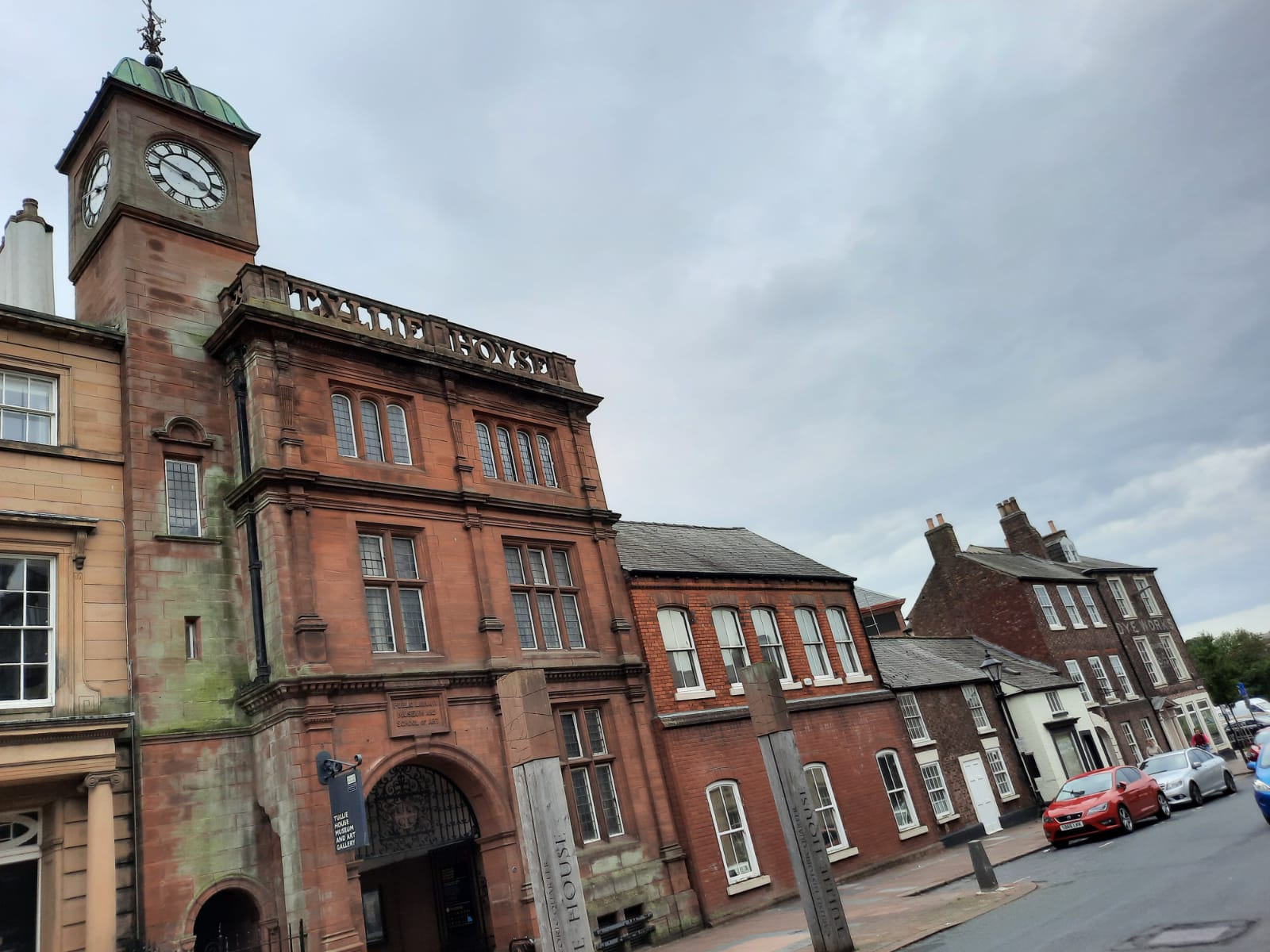
One thought on “Tullie House Museum & Art Gallery, Carlisle”